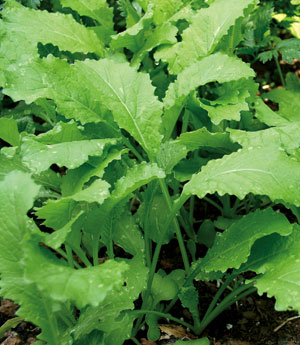Alabama Gardener

The steaminess of early September will gradually give way to longer, cooler nights, which is exactly what many plants have been waiting for. Peppers that set only a handful of fruits all summer will soon be groaning with the weight of their crop, and marigolds that stopped blooming in August will cover themselves with flowers. Join in on this fall revival by stocking your garden with plants that thrive when grown during the short, cool days of fall. In the vegetable garden, fill a bed with lettuce, spinach and radishes along with lesser-known salad greens such as arugula and English watercress. You can also plant a fast crop of dill, and many Alabama gardeners have no trouble keeping fall-planted cilantro and parsley growing all winter. It’s high season for sowing cooking greens, including turnips, mustard, Chinese cabbage, collards and kale. To help the seeds germinate quickly, water the bed before and after you plant the seeds, and then cover the seeded area with an old blanket during the day for three days. Don’t forget to water broccoli and other cabbage cousins you planted last month, and check them often for insect pests. If you can get them through September, cabbage family veggies will face few problems as they mature later in the fall. Dig sweet potatoes and peanuts while the soil is warm, and then cure them in a warm place to prepare them for long-term storage. Adopt chrysanthemums and asters to bring fresh colors to your fall landscape. Most of the plants sold in pots will survive winter if they are well rooted before cold weather comes. This is a good time to dig and divide daylilies, stokesia, and other perennials that bloom in early summer, or to simply move misplaced clumps to a new home. Check for bagworms on needle evergreens, and clip them off with scissors or pruning shears. Prune and fertilize long-blooming annuals from ageratum to zinnias. From mid-month onward, sow seeds of hardy annual flowers including bachelor buttons, larkspur, sweet William, lunaria, corn poppies and Siberian wildflowers. Also, try short-lived perennials like black-eyed Susan, as well as echinacea (purple coneflower) and other easy perennials. If the weather is dry, cover seeded spots with boards or sheets of cardboard for a week or so to keep the soil moist until the seeds germinate. Thoroughly clean houseplants that have spent the summer outdoors to remove aphids, spider mites and mealy bugs that might be hiding between the leaves. As an extra precaution, place plants on their way indoors in a shady place, and drench them with insecticidal soap. If you plan to bring zonal geraniums indoors for the winter, gradually move them to shadier quarters so they can become accustomed to lower light levels. Leave holiday cactus, kalanchoe, jasmine vine, and potted azaleas and gardenias outdoors until freezing weather comes, because they set buds as days become shorter and cooler in the fall. Fertilize shady fescue lawns, and sow fresh seed to green up thin sections. If you want your Bermuda or zoysia lawn to stay green all winter, overseed it with perennial ryegrass late in the month. Perennial ryegrass seed costs more than annual ryegrass, but it has a much finer texture and requires only occasional mowing. Strawberries are easy to grow as winter annuals. You can set plants 6 inches apart in large containers, or give them more room in a well drained raised bed. Kept moist until they take root, plants set out in September will bear in April and May. A native of Mobile, award-winning garden writer Barbara Pleasant is the author of “The Complete Houseplant Survival Manual” and many other books. You can learn more about Barbara at her Web site, barbarapleasant.com.
